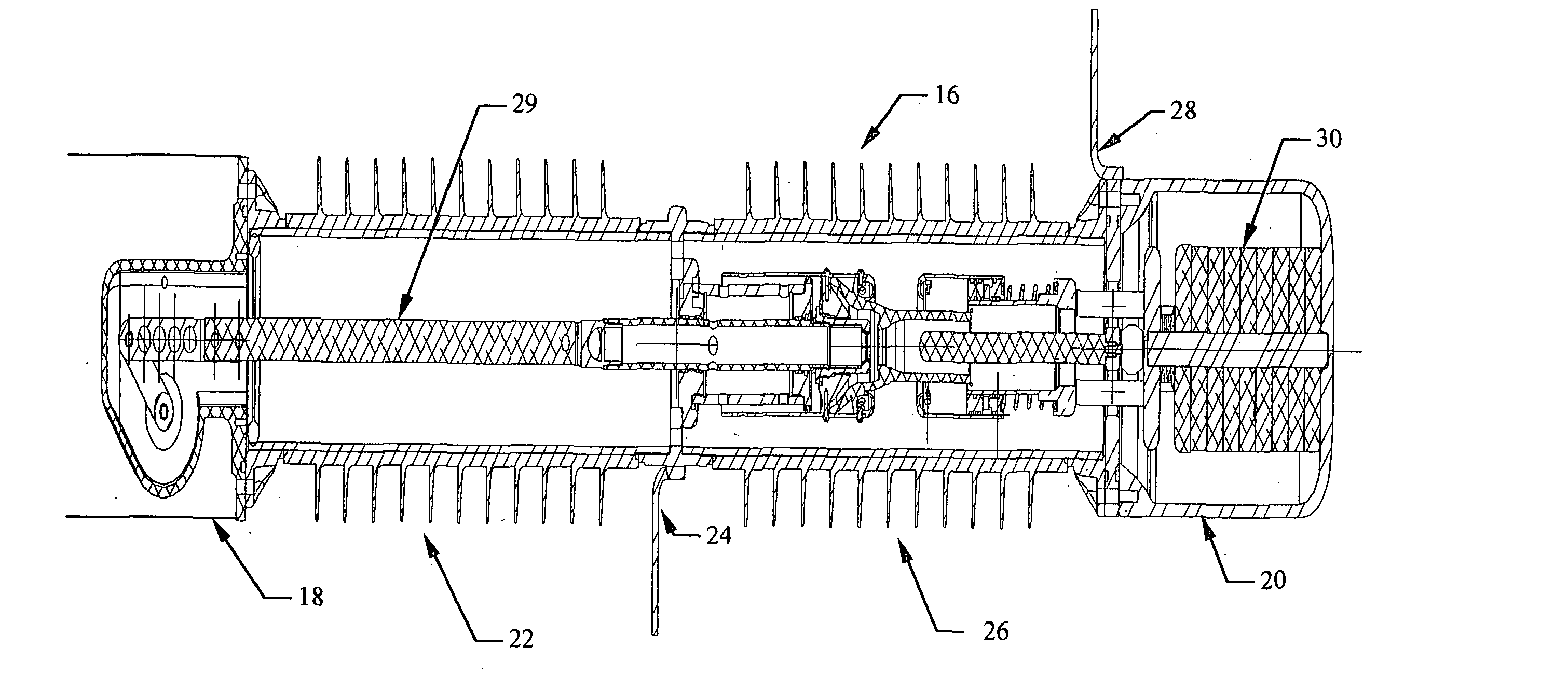Capacitor switch with internal retracting impedance contactor
a technology of impedance contactor and capacitor switch, which is applied in the direction of air break switch, high-tension/heavy-dress switch, electrical apparatus, etc., can solve the problems of rotary contactor acceleration device that is cumbersome, requires a much larger container, and can not be used in a large container, so as to achieve less expensive, less complex, and less expensive
- Summary
- Abstract
- Description
- Claims
- Application Information
AI Technical Summary
Benefits of technology
Problems solved by technology
Method used
Image
Examples
Embodiment Construction
[0040] The present invention may be embodied in an electric power switch that is suitable for use as a capacitor switch at distribution and sub-transmission voltages. The capacitor switch typically includes a power contactor and an impedance contactor located within a relatively slender insulator forming a container filled with dielectric gas. The capacitor switch also includes a conductive cap housing a charging impedance located on the end of the insulator, which physically separates the conductive cap and the charging impedance from the insulator. This allows the conductive cap to be electrically separated from container, which allows the insulator to be replaced by a grounded conductive container in a “dead tank” configuration.
[0041] The power contactor may be a probe-and-socket type penetrating contactor, with a fixed probe and a moving socket. Similarly, the impedance contactor may be a ring-type butt contactor surrounding the penetrating contactor. The butt contactor typical...
PUM
 Login to View More
Login to View More Abstract
Description
Claims
Application Information
 Login to View More
Login to View More - R&D
- Intellectual Property
- Life Sciences
- Materials
- Tech Scout
- Unparalleled Data Quality
- Higher Quality Content
- 60% Fewer Hallucinations
Browse by: Latest US Patents, China's latest patents, Technical Efficacy Thesaurus, Application Domain, Technology Topic, Popular Technical Reports.
© 2025 PatSnap. All rights reserved.Legal|Privacy policy|Modern Slavery Act Transparency Statement|Sitemap|About US| Contact US: help@patsnap.com



